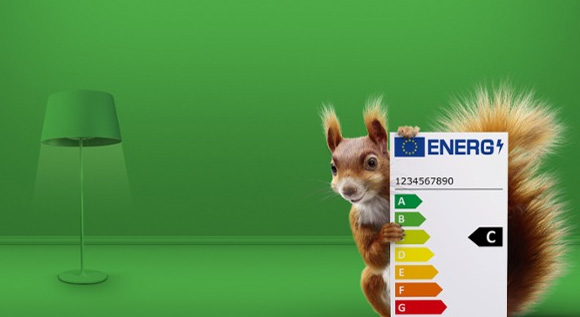A shining example of energy efficiency
As of this September, it has become much easier to conserve energy: the new EU energy label for lamps is giving consumers greater transparency when shopping for lamps. Read on to find out why it makes sense to compare, and how else you can conserve electricity.
 © Federal Ministry for Economic Affairs and Energy
© Federal Ministry for Economic Affairs and Energy
It’s autumn now in Germany. The days are becoming shorter and we leave our lamps on for longer and longer. So it’s good that, since 1 September 2021, all the lamps on offer in shops have been boasting the new EU energy label. This label gives consumers important information about the energy performance of LEDs and other lamps, making it easier to compare. Consumers that take the time to choose the right lamp for them can conserve a great deal of electricity. This is good news for the environment and helps you save cash. After all, lighting accounts for almost 10% of the average German household’s electricity bill.
A new EU energy label to make it easier to compare
The switchover to the new EU energy label must be completed by the retail sector by 28 February 2023. But what exactly is new about the label and what does it say? In future, all lamps will again boast a simple letter ranging between A and G. A is reserved for the most efficient products, G for the least efficient ones. There will be no more ‘+ categories’. It is possible, for instance, that a product that used to be labelled ‘A+++’ may now bear a B or C label.
The EU energy label provides the following information: the lamp’s class of energy efficiency, its energy consumption over 1,000 hours operating time (in kilowatt hours), and a QR code, which links up to the EU product database called EPREL and gives consumers additional information about the product.
More room for innovation
So why this change of label? The freed-up, upper energy-efficiency classes leave room for new, clever innovations that will give us even more energy-efficient and climate-friendly lighting for the cold season. Over the last few years, there have been a number of technical developments that have helped improve products’ energy performance. This has meant that there are several product groups where almost all products on the market find themselves in the best efficiency categories. What’s important to know is that the new categories are based on new calculation methods. This means that they are different from the categories indicated on the old EU energy label.
New things replace old ones. This is also true for some lamps, especially some energy-saving light bulbs and halogen lamps, that no longer meet the EU minimum requirements for energy efficiency. As of September 2023, these products and some fluorescent tubes will no longer be on sale in the EU.
A short video clip published on the Economic Affairs Ministry’s platform “Deutschland macht’s effizient“, which also has additional information on the new EU energy label and on energy efficiency, shows consumers what to watch out for when shopping for a new lamp.

